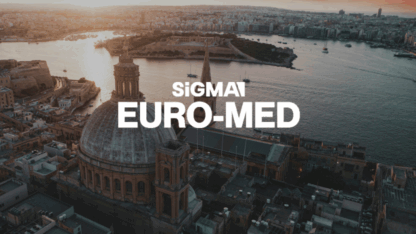What Is a Source of Funds?
Source of funds refers to the origin of funds used in a transaction. It relates to the account that was used to make a payment and the source of the money in that account.
Businesses must put checks in place relating to the source of funds (SOF) to ensure that their customers are not using transactions to launder money gained through illegal activities. This is one of many steps that organizations must take to ensure that they comply with anti-money laundering legislation such as the 6th Anti Money Laundering Directive (6AMLD).
Establishing the source of funds can be complicated, particularly where transactions are made through companies. In such cases, businesses must dive deep in order to comply with anti-money laundering (AML) legislation, establishing facts ranging from how the company makes its money to who is the ultimate beneficial owner of a business – that is, the person who will ultimately gain financially.
Despite the difficulties, businesses must put processes in place to ensure that their verification of sources of funds is sufficient to meet the requirements of AML legislation. Failure to do so could result in legal proceedings, heavy fines, and extensive reputational damage due to the resulting association with criminals.
Keep your business safe by filtering out fraudsters early, automating global AML screening, continuous monitoring and payment screening – all in one solution.
Client screening software
How Does the Source of Funds Verification Work?
Source of funds verification works by asking customers to provide evidence of where their funds have come from. Employment contracts and documents that show proof of investments, for example, can demonstrate that funds have been obtained through legitimate channels.
Having to identify the source of funds behind every single transaction places an enormous administrative burden on businesses. Thankfully, risk-based, machine learning-driven Know Your Customer (KYC) solutions are available to help organizations identify their most risky customers and take steps to ensure they act accordingly.
Different elements of a transaction can trigger a business to initiate a source of funds verification. For example, a new customer who spends $100,000 or more in their first purchase (or first few purchases) certainly warrants further attention. Likewise, any customer deemed as being particularly high-risk, such as a politically exposed person (PEP), will need to go through additional checks.
Tips to Make the Process Easier
Any reliable source of funds verification starts with ensuring that robust processes are in place for gathering and verifying customers’ personally identifiable information (PII) as part of the onboarding process. Doing so manually is far too onerous and time-consuming; opting for a fully featured, customizable KYC and fraud-fighting solution is essential in order to simplify the process.
Examples of Source of Funds
Sources of funds can be both legitimate and illegitimate. A legitimate example of a source of funds can include anything where the money was obtained through legal means, such as:
- wages, bonuses, dividends, and other income from employment
- pension payments
- interest from personal savings
- returns on investments
- money from property sales
- legitimately won money, such as that received from betting or winning the lottery
- inheritance and gifts
Illegitimate sources of funds, on the other hand, include money gained through terrorism, fraud, bribery, laundered money, and so on.
Why Is SOF Important?
Establishing the source of funds is essential for businesses to prevent inadvertent involvement in money laundering and terrorism financing. The United Nations Office on Drugs and Crime estimates that 2% to 5% of global GDP, or between $750 billion and $2 trillion annually, is laundered. This alarming statistic emphasizes the need for robust anti-money laundering (AML) checks, including SOF verification.
The global market for AML software has grown significantly, from $868 million in 2017 to an estimated $2.04 billion in 2023, reflecting a strong commitment to compliance. Companies also face substantial financial risks: under the 6th Anti-Money Laundering Directive (6AMLD), non-compliance can result in fines of at least €5 million (around $5.4 million) and potential prison sentences. Additionally, reputational damage from failing to comply can lead to lost customers and revenue.
In summary, verifying the source of funds is crucial for businesses to meet legal obligations, safeguard their integrity and contribute to the fight against financial crime.
Differences Between Source of Funds and Source of Wealth
It’s important to note that source of funds and source of wealth (SOW) are not the same thing. As we’ve discussed above, establishing the source of funds relates to identifying where the money used in a transaction has come from. A source of wealth, on the other hand, refers to the origins of a person’s overall wealth, rather than the funds relating to a single transaction.
This means that businesses looking into the source of an individual’s wealth must undertake additional work to that required for the verification of the source of funds.
Businesses weighing up whether they need to undertake source of funds versus source of wealth verification checks are largely guided by regulatory requirements. Those working in the banking, insurance, property, and financial services sectors, for example, are likely to look far more closely at the source of wealth, due to the nature of the work they undertake and the amount of money that they process.
While businesses can establish the source of funds used in a transaction by checking financial documents, the source of wealth verification must look deeper. An individual who has accumulated their wealth through employment, for example, could show their contract, pay stubs, tax returns, and other salary-related documents as evidence. One who has inherited wealth could provide evidence of the transfer of funds from the estate of the deceased, including documentation of any tax paid in relation to the inheritance. Wealthy business owners, meanwhile, could show their income statements, contracts, sales documents, and so forth.
The evidence requirements involved in SOF versus SOW checks will vary from case to case. As such, businesses need to be flexible in their approach and ensure that the checks they undertake are always suited to the customer in question.
See how SEON’s pre-KYC and AML solutions streamline your customer verification, filtering out bad actors early, reducing costs and improving the experience for legitimate users.
Ask an Expert
Best Solutions for Source of Funds Verification
Effective source of funds verification is essential for businesses to comply with anti-money laundering (AML) regulations and prevent financial crimes. Implementing AML screening and pre-KYC checks can streamline this process significantly.
AML screening involves checking customer information against watchlists, such as those for politically exposed persons (PEPs) and sanctions. This allows businesses to identify high-risk individuals before they enter the customer base. Integrating these checks into the onboarding process enables efficient assessment of fund legitimacy while ensuring regulatory compliance.
Pre-KYC checks allow you to gather essential customer information early in the customer journey via advanced technologies including digital footprint analysis, IP analysis and device intelligence. This proactive approach reduces friction during the KYC process, saving time and minimizing the risk of engaging with customers whose funding sources may be questionable.
By combining AML screening and pre-KYC checks, businesses can establish a robust framework for SOF verification. Advanced solutions can automate these processes, ensuring thorough checks without overwhelming customers. This dual approach enhances compliance and protects businesses from reputational damage and financial penalties associated with non-compliance.








